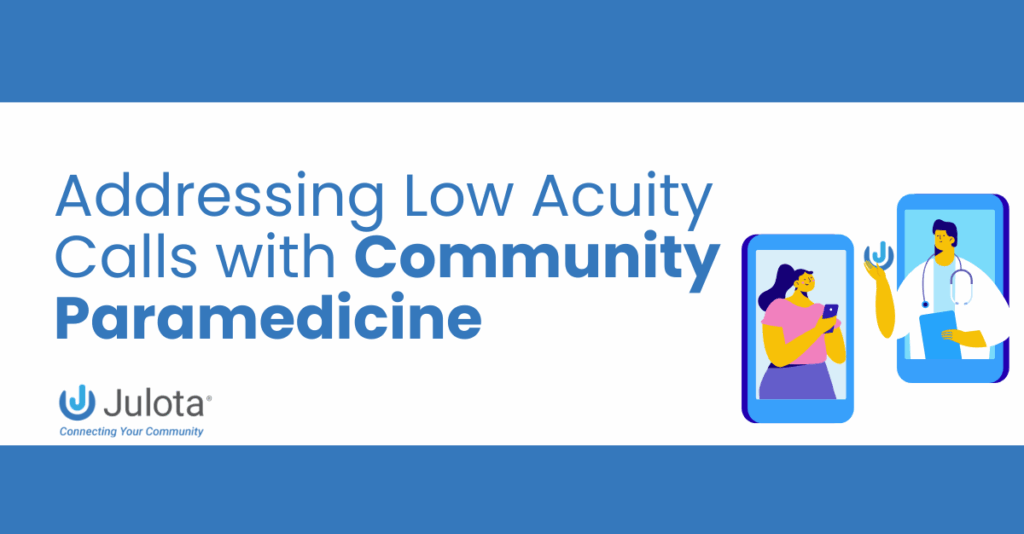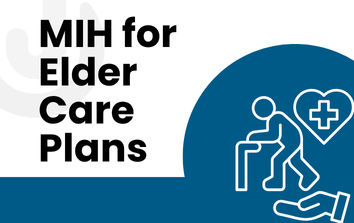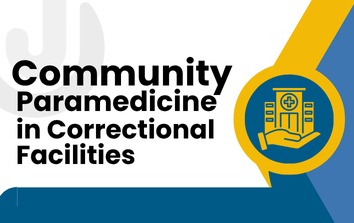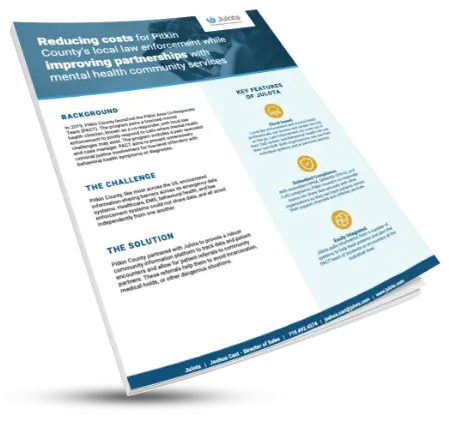Community Paramedicine is well equipped to address low-acuity calls that may otherwise take emergency resources away from life-threatening situations. Community paramedicine can help individuals with complex health issues who do not require immediate emergency care.

Community paramedicine addresses low acuity calls by participating in tiered response systems, scheduling visits with patients ahead of time, collecting data to identify and correct the foundational cause of low acuity calls, and providing people with education on accessing the health system in a way that is most helpful to their specific needs.
First Responders and the Conundrum of Low-Acuity Calls
Suppose you ask any paramedic, police officer, or firefighter why they decided to pursue their prospective careers. In that case, you’ll likely learn that they wanted to help people in their most dire situations – and ultimately prevent the loss of life.
But what happens when they get calls for people who need help removing their socks (yes, it happens often)? Or the person who repeatedly calls for help moving from their bed to their living room chair? While it’s easy to minimize these types of calls (and even become frustrated), that’s not going to solve the issue.
While more emergency crews (fire, EMS, PD) are happy to help the occasional kitten out of a tree, what happens when these kinds of low-acuity, low-danger types of calls begin preventing them from responding to life threats? Unfortunately, these scenarios happen often.
So we don’t want to minimize the fact that some people truly need help with non-life-threatening events. Still, we also don’t want to overlook that these low-acuity 911 calls can present a problem for the broader safety of the community.
Thankfully, community paramedicine is working to provide some answers. Let’s look at some of the ways innovative community paramedic teams are tackling the issue of low-acuity non-emergency calls.
Here’s how Community Paramedicine addresses low acuity 911 calls:
- Using Tiered Response Dispatching
- Freeing up Other Units to Take Life-threatening Calls
- Scheduling Visits Ahead of Time to Reduce Super-Utilizers
- Working to Correct the Foundational Cause of the Problem
- Educating Patients on Preventative Care (Correcting Falls/Alarms)
We’ll discuss the details below.
Mobile Integrated Health-Community Paramedicine Uses Tiered Response Dispatching for Low Acuity Calls
If you learn how one county or city dispatches their ambulances and emergency vehicles, you’ve learned how one county or city dispatches their ambulances and emergency vehicles. There is a wide variety of practices and methodologies that impact how an area chooses to dispatch to 911 calls.
Some areas take a “play it safe” approach, dispatching every 911 call as if it were a life-threatening emergency, with a full lights and sirens response from their paramedics and firefighters. Other areas have a more systematic approach that takes into account the nature of the call (a call for an allergic reaction would receive a faster response than a call for a sprained finger).
Still, some areas take it a step further and will queue 911 calls that are deemed non-emergent and low acuity. In certain areas, this is by necessity; they don’t have the ambulances or personnel for an emergent response to low-acuity calls.
In other areas, this tiered response system is carefully planned, often with a community paramedic team involved.
To show you how this works, let’s look at an example. Imagine that an ambulance is dispatched for a person with a stomachache. Initially, the ambulance responds emergently; however, as the dispatcher receives more information, they find that the caller is low-acuity and a good candidate for a non-emergent community paramedic response.
At this time, the ambulance can return to service (where they are available to cover life-threatening calls), and the community paramedics respond to the call for abdominal pain. In this way, care is taken to ensure that an emergent call is not overlooked, while keeping the highest level of emergency coverage for the area.
Now let’s talk more about this overall goal of addressing low acuity calls with MIH-CP.
Freeing up Other Units to Take Life-threatening Calls with Community Paramedicine
As we alluded to in the first section, low-acuity calls can present a burden for emergency responders. However, we want to be careful with our language surrounding these calls. In many cases, low acuity is grouped into “low importance,” and that’s a belief that community paramedicine fundamentally rejects.
Labeling a low-acuity call as low importance (and thus failing to adequately respond to a clear need) is the equivalent of pushing off the first signs of a chronic disease as “no big deal.” As we all know, the longer you overlook a problem, the more difficult it is to overcome.
In the case of low-acuity calls, consider this example. Mr. Jones has called the ambulance once a month for the past two years after he has fallen in the bathroom. The EMS crews are helpful and kind, and they lift him up off the ground and check his vital signs.
However, now Mr. Jones is calling the ambulance every week, sometimes multiple times a week, for falls. What went wrong? It’s not that the EMS crew was unkind, or that anyone didn’t do their jobs – it’s that there was a failure to address the underlying issue.
When Mr. Jones was calling once a month for a fall, he was deemed “unimportant,” but now he meets the definition of a super-utilizer and is straining the system’s resources.
Much of this could have been avoided if Mr. Jones had been flagged as a candidate for community paramedicine. An MIH team could have visited and taken steps to prevent his falls (removed area rugs, installed handlebars, trained him on the use of a walker, etc.)
Community paramedics work to tackle the low-acuity calls before they become big problems. More and more health systems have realized that low-acuity calls won’t just go away if you ignore them. You have to take action.
Scheduling Visits Ahead of Time to Reduce Super-Utilizers via MIH-CP
Another way that MIH-CP teams can address low-acuity calls is by finding these people and then scheduling a visit with them. This helps in several ways. First, it tells the person calling 911 that they aren’t on their own, and that there will be someone there to answer their questions and offer help.
Second, the community paramedic can try to prevent the low-acuity calls before they happen. For instance, if they can see someone has called about issues related to their medications, they can help that person organize their meds, so they are easily accessible.
In some cases, the person might need continued support from the community paramedic team. However, at other times, they may just require several visits and a carefully designed health plan to prevent future low-acuity calls.
If you haven’t already, have a look at our guide to building a high-impact mobile crisis response team.
MIH-CP Works to Correct the Foundational Cause of the Frequent Low-Acuity Caller
Remember that example we discussed several sections ago? The one where Mr. Jones continues to fall? In that example, it wasn’t that the responders weren’t helping him – they were. They just weren’t considering (perhaps they were but didn’t have the resources) why he was falling and how they might help.
A traditional EMT and Paramedic ambulance crew is trained to look for life threats, stabilize, and move on to the next patient. This is by design, and an important aspect of emergency care where the goal is to do the most good for the most people.
However, this emergency response structure often doesn’t leave room for a more nuanced approach to patient management. That’s where community paramedics can be so effective at managing low-acuity calls – they can look for the underlying issues and work to manage them.
Community Paramedic Teams Take Their Time in Educating Patients on Preventative Care (Correcting Falls/Alarms)
Finally, community paramedics take time educating their patients in an open and honest manner. This means that they will take the time to ensure that people understand their medications, know the dangers of certain trip hazards, and have access to non-emergency help lines should they need low-acuity help.
Patient education means that community paramedics take the time to provide people with more information on how the healthcare system works and how they can best help themselves.
Key Points: How Mobile Integrated Healthcare Community Paramedicine Addresses Low-Acuity 911 Calls
Low-acuity calls are not low-importance; however, they do require a different kind of response in order to keep emergency vehicles available for truly life-threatening events. Community paramedics have stepped up to the plate to help solve some of the complexities surrounding low-acuity 911 calls.
Community paramedics will work as part of a tiered 911 response, where they can respond to those calls that don’t meet the criteria for an immediate life threat. They can also schedule visits, provide education, and work to correct a person’s foundational struggles that are leading to low-acuity calls.
Community paramedics can only accomplish these tasks due to careful coordination and data collection, and that’s where Julota comes in. Contact Julota to discover how their MIH/CP software tools enable communities to effectively address low-acuity 911 calls.




